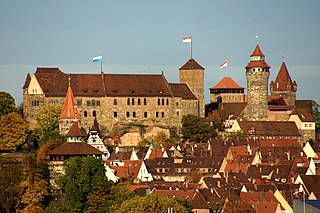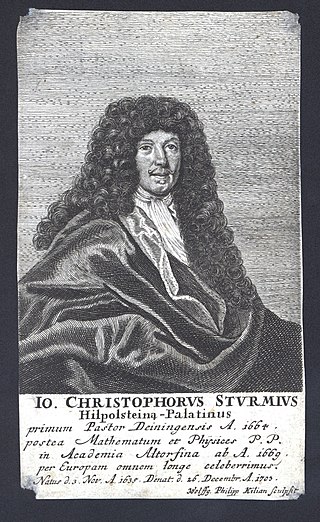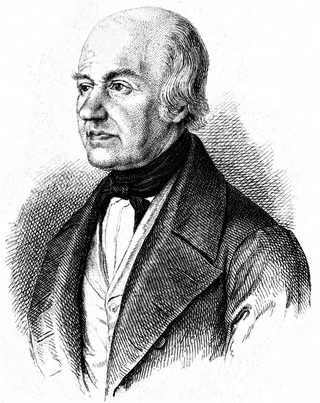Related Research Articles

Johann Baptist Homann was a German geographer and cartographer, who also made maps of the Americas.

Nuremberg is the largest city in Franconia, the second-largest city in the German state of Bavaria, and its 544,414 (2023) inhabitants make it the 14th-largest city in Germany.

The Nuremberg rallies were a series of celebratory events coordinated by the Nazi Party in Germany. The first Nazi Nuremberg rally took place in 1923. This rally was not particularly large and did not have much impact; however, as the party grew in size, the rallies became more elaborate and featured larger crowds. They played a seminal role in Nazi propaganda events, conveying a unified and strong Germany under Nazi control. The rallies became a national event once Adolf Hitler rose to power in 1933, when they became annual occurrences. Once the Nazi dictatorship was firmly established, the party's propagandists began filming them for a national and international audience. Nazi filmmaker Leni Riefenstahl produced some of her best known work including Triumph of the Will (1934) and The Victory of Faith (1933), both filmed at the Nazi party rally grounds near Nuremberg. The party's 1938 Nuremberg rally celebrated the Anschluss that occurred earlier that year. The 1939 scheduled rally was cancelled just before Germany's invasion of Poland and the Nazi regime never held another one due to the prioritization of Germany's efforts in the Second World War.

Carl Wilhelm Hahn was a German zoologist and author of the first German monograph on spiders. C. W. Hahn was an all-round natural scientist – not at all unusual for his time. Surprisingly, he seems to have been almost forgotten. Even the few biographical dates that have been published in secondary literature are not always correct as clarified by P. Sacher in his "attempt at a Biography".

Franz von Paula Schrank was a German priest, botanist and entomologist.

Carl Ludwig Koch was a German entomologist and arachnologist. He was responsible for classifying a great number of spiders, including the Brazilian whiteknee tarantula and common house spider. He was born in Kusel in the Holy Roman Empire, and died in Nuremberg, Germany.

Johann Christoph Sturm was a German philosopher, professor at University of Altdorf and founder of a short-lived scientific academy known as the Collegium Curiosum, based on the model of the Florentine Accademia del Cimento. He edited two volumes of the academy's proceedings under the title Collegium Experimentale. In 1670, he translated the works of Archimedes into German.

Jacob Sturm was a leading engraver of entomological and botanical scientific publications in Germany at the end of the 18th and beginning of the 19th century. He was born and lived in Nuremberg and was the only son of engraver Johann Georg Sturm (1742-1793), who trained him in drawing and copperplate engraving.
Nuremberg is a city in Germany.

Nürnberg Hauptbahnhof or Nuremberg Central Station is the main railway station serving the city of Nuremberg in Germany. It is the largest station in north Bavaria and belongs to the 20 stations in the highest category of importance allocated by DB Station&Service.

Hilpoltstein is a town in the district of Roth, in Bavaria, Germany. It is situated 10 km southeast of Roth bei Nürnberg and 30 km south of Nuremberg, close to the lake 'Rothsee.

The Nuremberg S-Bahn is an S-Bahn network covering the region of Nuremberg, Fürth and Erlangen which started operations in 1987 and is now integrated into the Greater Nuremberg Transport Association. The full length of the five current lines is about 277.6 kilometres.

The Documentation Center Nazi Party Rallying Grounds is a museum in Nuremberg. It is in the north wing of the unfinished remains of the Congress Hall of the former Nazi party rallies. Its permanent exhibition "Fascination and Terror" is concerned with the causes, connections, and consequences of Nazi Germany. Topics that have a direct reference to Nuremberg are especially taken into account. Attached to the museum is an education forum.

Johann Christoph Volkamer was a German merchant, manufacturer and botanist.

Nuremberg Zoo is a zoo located in the Nuremberg Reichswald, southeast of Nuremberg, Germany. With an area of 67 hectares, approximately 300 animal species are kept by the zoo.

The Nuremberg tramway network is a network of tramways forming part of the public transport system in Nuremberg, a city in the federal state of Bavaria, Germany. The system reached the neighboring city of Fürth from its opening year to almost a century later when construction of the U1 subway line led to the withdrawal of tram service to and within Fürth. During that era and referring to it historically in literature or nostalgic activities, the system was known as “Nürnberg-Fürther Straßenbahn“. For example, a local association dedicated to preserving the history and heritage of the tram network as well as old rolling stock calls itself “Freunde der Nürnberg-Fürther Straßenbahn“ The system is planned to cross the municipal boundaries of Nuremberg once more, if and when the extension to Erlangen and from there to Herzogenaurach dubbed "Stadtumlandbahn" opens.
The Verkehrs-Aktiengesellschaft Nürnberg is the municipal company responsible for operating the U-Bahn, trams, and buses throughout the city of Nuremberg, in the state of Bavaria, Germany. VAG is a wholly owned subsidiary of Städtischen Werke Nürnberg, and a member of the Verkehrsverbund Großraum Nürnberg.

The VAG Class G1 is an electric multiple unit (EMU) train type operated by the Verkehrs-Aktiengesellschaft Nürnberg on the Nuremberg U-Bahn system. They have replaced the VAG Class DT1 and VAG Class DT2 previously in service on Nuremberg U-Bahn line U1. On 20 August 2020, the first of three G1 trains entered into the revenue service.

The bombing of Nuremberg was a series of air raids carried out by allied forces of the Royal Air Force (RAF) and the United States Army Air Forces (USAAF) that caused heavy damage throughout the city from 1940 through 1945. Nuremberg was a favored point of attack for allied bombers in World War II even though it was only later included into the radius of action due to its location in the south of Germany. Because Nuremberg was a strong economic and infrastructural hub and had symbolic importance as the "City of the Nuremberg Rally" it was singled out by the Allies as an important target.

The Pellerhaus monument is an archive and library building on Egidienplatz in Nuremberg's old city centre. It extends over the area of the historic Pellerhaus and the historic Imhoff house to the east of it, which was rebuilt after the war in the contemporary design of the late 1950s.